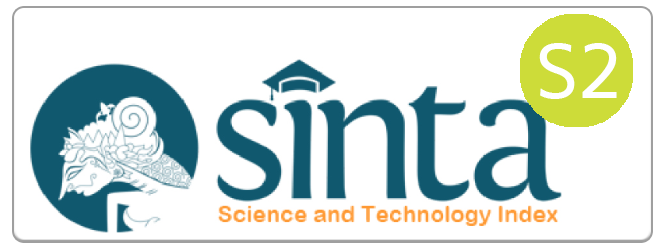The Ongoing Struggle for Agrarian Reform As an Unfinished Agenda? Lessons From Mekarsari Village
Abstract
Abstract: Agrarian reform without interaction between the state and society only addresses temporary issues. The implementation of agrarian reform in Indonesia has been overly focused on achieving outputs based on easily measurable quantities, leaving social problems unaddressed. The aim of this research is to elaborate the implementation of agrarian reform, particularly in the management of assets in the Mekarsari Agrarian Reform Village. The method used is a quantitative approach using questionnaires and in-depth interviews with 50 respondents who are beneficiaries of agrarian reform. The data were then analyzed using descriptive statistics method. The results of the study indicate that the implementation of management at the planning, implementation, and monitoring and evaluation stages shows that the interaction between the responsibility of state actors and community participation is low. As a result, the implementation of agrarian reform is still one-way, limited to completing the output targets of land redistribution and granting access decided by the organizers. Without meaningful community participation, it will be difficult for the community to take control to decide on the appropriate use of resources. For this reason, the implementation of agrarian reform in Mekarsari Village still needs to be contested.
Keywords: Agrarian reform, Contested, State-society interaction
Downloads
References
Aggarwal, S., Larson, A., McDermott, C., Katila, P., & Giessen, L. (2021). Tenure reform for better forestry: An unfinished policy agenda. Forest Policy and Economics, 123(December 2020), 102376. https://doi.org/10.1016/j.forpol.2020.102376.
Agrawal, A., & Ostrom, E. (2001). from the SAGE Social Science Collections . All Rights. Politics & Society, 29(4), 485–514.
Appu, P. S. (1996). Land reforms in India: a survey of policy, legislation and implementation (1 ed.). Diambil dari https://dokumen.pub/land-reforms-in-india-a-survey-of-policy-legislation-and-implementation-9788125902331-8125902333.html.
Besley, T., Leight, J., Pande, R., & Rao, V. (2016). Long-run impacts of land regulation: Evidence from tenancy reform in India. Journal of Development Economics, 118, 72–87. https://doi.org/https://doi.org/10.1016/j.jdeveco.2015.08.001.
Chavunduka, C., Dipura, R., & Vudzijena, V. (2021). Land, investment and production in agrarian transformation in Zimbabwe. Land Use Policy, 105, 105371. https://doi.org/https://doi.org/10.1016/j.landusepol.2021.105371.
Creswell, J. W. (2016). Research Design: Qualitative, Quantitative and Mixed Methods Approach (Terjemahan: A. Fawaid dan R.K. Pancasari. 2016. Research Design: Pendekatan Metode Kualitatif, Kuantitatif dan Campuran. In Penerbit Pustaka Pelajar, Yogyakarta, Indonesia (1 ed.). Los Angeles, USA: SAGE Publication, Inc.
De Soto, H. (2000). The Mystery of Capital. Why it works only in the West (hal. 276). hal. 276.
Kementerian ATR/BPN. (2020). Peraturan Menteri Agraria dan Tata Ruang/Kepala Badan Pertanahan Nasional Nomor 27 Tahun 2020 tentang Rencana Strategis Kementeri Agraria dan Tata Ruang/Kepala Badan Pertanahan Nasional Tahun 2020-2024. Kementerian ATR/BPN.
Kusuma, A. F., Sahide, M. A. K., Purwanto, R. H., Ismariana, E., Santoso, W. B., Wulandari, E., & Maryudi, A. (2023). Emergent Institutional Issues from New Tenure Reforms and Social-Forestry Initiatives in Indonesia: Notes from The Field. Forest and Society, 7(2), 450–466. https://doi.org/10.24259/fs.v7i2.28319.
Mahfud, M. A., Djohan, N. H., & Malik, M. F. (2024). Land Bank in Indonesia: Disoriented Authority, Overlapping Regulations and Injustice. Jambura Law Review, 6(2), 240–263. https://doi.org/10.33756/jlr.v6i2.24166.
McCarthy, J. (2007). Shifting Resource Entitlements and Governance Reform During the Agrarian Transition in Sumatra, Indonesia. The Journal of Legal Pluralism and Unofficial Law, 39(55), 95–121. https://doi.org/10.1080/07329113.2007.10756609.
Moyo, S. (2011). Changing agrarian relations after redistributive land reform in Zimbabwe. Journal of Peasant Studies, 38(5), 939–966. https://doi.org/10.1080/03066150.2011.634971.
Olumba, C. N., Garrod, G., & Areal, F. J. (2024). Time Preferences, Land Tenure Security, and the Adoption of Sustainable Land Management Practices in Southeast Nigeria. Sustainability, 16(5), 1747. https://doi.org/10.3390/su16051747.
Ostrom, E. (2005). Understanding institutional diversity Princeton University press. In New Jersey.
Pereira, J. M. M., & Mendes Pereira, J. M. (2007). The World Bank’s ‘Market-Assisted’ Land Reform as a Political Issue: Evidence from Brazil (1997-2006). European Review of Latin American and Caribbean Studies | Revista Europea de Estudios Latinoamericanos y del Caribe, 0(82), 21. https://doi.org/10.18352/erlacs.9638.
Pretty, J. N. (1995). Participatory learning for sustainable agriculture. World Development, 23(8), 1247–1263. https://doi.org/10.1097/SCS.0b013e31821c9464
Ribot, J. C., & Peluso, N. L. (2003). A Theory of Access. Rural Sociology, 68(2), 153–181. https://doi.org/10.1111/j.1549-0831.2003.tb00133.x
Scoones, I., Marongwe, N., Mavedzenge, B., Murimbarimba, F., Mahenehene, J., & Sukume, C. (2011). Zimbabwe’s land reform: Challenging the myths. Journal of Peasant Studies, 38(5), 967–993. https://doi.org/10.1080/03066150.2011.622042
Subekti, R., & Usada, A. (2023). The Utilization of Abandoned Land in Indonesia: A Comparative Study on Malaysia in the Fulfillment of Human Rights. International Journal of Sustainable Development and Planning, 18(10), 3317–3325. https://doi.org/10.18280/ijsdp.181031
Sutaryono, Junarto, R., Pinuji, S., Mahasari, J., & Mujiburohman, D. A. (2024). Land Rights and Agrarian Reform in Forest Areas: A Basis for Sustainable Development. International Journal of Sustainable Development and Planning, 19(1), 237–245. https://doi.org/10.18280/ijsdp.190122
UU/5. (1960). Tentang Peraturan Dasar Pokok Agraria. (5).
Vendryes, T. (2014). Peasants Against Private Property Rights: A Review of The Literature. Journal of Economic Surveys, 28(5), 971–995. https://doi.org/10.1111/j.1467-6419.2012.00743.x
Vista, B. M., Nel, E., & Binns, T. (2012). Land, landlords and sustainable livelihoods: The impact of agrarian reform on a coconut hacienda in the Philippines. Land Use Policy, 29(1), 154–164. https://doi.org/https://doi.org/10.1016/j.landusepol.2011.06.002
Waeterloos, E., & Rutherford, B. (2004). Land reform in Zimbabwe: Challenges and opportunities for poverty reduction among commercial farm workers. World Development, 32(3), 537–553. https://doi.org/10.1016/j.worlddev.2003.06.017.
Widodo, S. (2017). A critical review of indonesia’s agrarian reform policy. In Journal of Regional and City Planning (Vol. 28). https://doi.org/10.5614/jrcp.2017.28.3.4.
Copyright (c) 2024 Andi Tenri Abeng, Joyo Winoto, Endriatmo Soetarto, Yudha Heryawan Asnawi, Sitti Hadijah, Rai Sita

This work is licensed under a Creative Commons Attribution-ShareAlike 4.0 International License.












